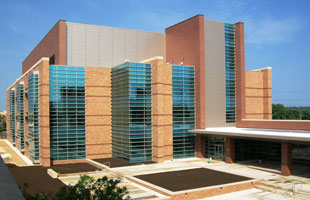The U.S. Army Institute of Surgical Research Gains New Facility As Well As New Units
The newly constructed addition to the Battlefield Health and Trauma Research Institute was turned over to the director of Public Works, Fort Sam Houston, Texas, Aug. 23.
The 150,000 sq. ft. facility which is adjacent to Brooke Army Medical Center and connected to the U.S. Army Institute of Surgical Research building, is the result of BRAC 2005, and permits all Department of Defense combat casualty care research (minus neuroprotection) to be co-located with the USAISR.
"In co-locating all combat casualty care research activities at Fort Sam Houston, BRAC 2005 recognized that the clinical activities of BAMC, particularly their trauma mission, will foster the rapid application of research findings to health care delivery, and provide synergistic opportunities to bring clinical insight into bench research," said Col. Lorne Blackbourne, commander of the USAISR.
Co-locating with the USAISR are Naval Medical Research Unit, San Antonio, which received the combat casualty care research sub-function of the Naval Medical Research Center from Forest Glen, Md., and the Naval Institute for Dental and Biomedical Research from Great Lakes, Ill.; as well as the U.S. Air Force Dental Evaluation and Consultation Service from Great Lakes Ill.
In addition the combat casualty care research sub-function of Walter Reed Army Institute of Research from Forest Glen, Md., the Army Medical Research Detachment from Brooks City-Base, Texas, and the Army Dental Trauma and Research Detachment from Forest Glen, Md. are now part of the USAISR.
With the arrival of these units in San Antonio, the Battlefield Health and Trauma Research Institute becomes a reality.
"The BHT is the culmination of years of planning, design and construction," said Col. William Dunn, the commander of DECS, "and provides medical and dental researchers a state of the art facility."
"Though each Service will retain control of their respective units, this new complex will permit researchers of the Army, Navy and Air Force to work together and share both ideas and resources," said Navy Capt. Vincent DeInnocentiis, commanding officer of NAMRU-SA. "We are now beginning a new era in combat casualty care and dental research within the DoD."















